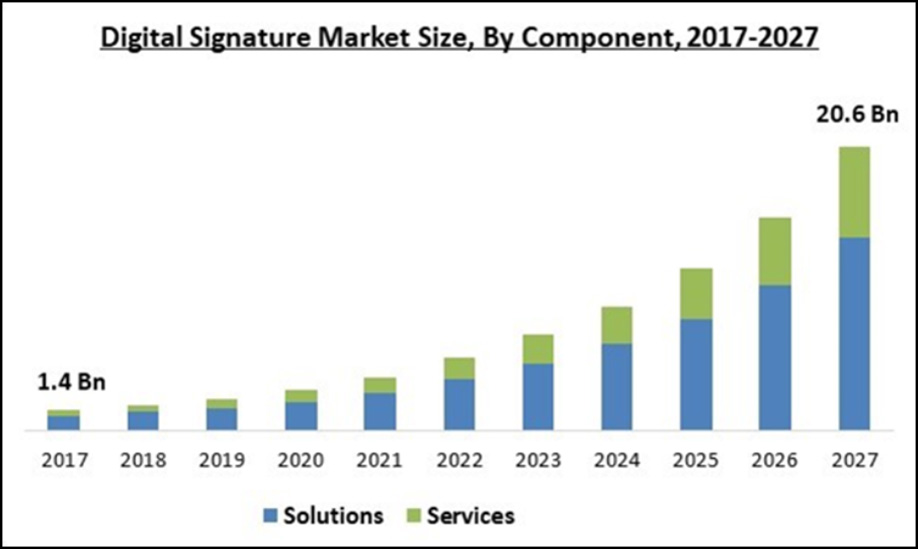
The signature revolution is upon us, with market projections reaching a massive $20.6 billion by 2027. Electronic signatures drastically improve internal processes and engagement across public and private sectors –it’s no surprise they are adopted rapidly worldwide.
Let's explore the driving forces behind this tech-fueled game changer.
COVID-19
The spread of COVID-19 was a catalyst in the rise of digital signatures with the need for social distancing. The number of use cases is virtually endless: NDAs; wills, codicils, and testamentary trusts; adoption, divorce, and family law documents; court orders and notices; real estate documents; change in life or health insurance benefits; transportation of hazardous materials, and more. Already, use has grown by an impressive 50% and shows no signs of slowing down.
Customer Expectations
Digital signature adoption has skyrocketed post-pandemic; it created a snowball effect. More organizations seek to keep up with user expectations and avoid being left behind. This extends to public organizations as well – customers increasingly expect the same ease of use from government entities that they experience in the private sector.
Increased Awareness of Legal Acceptance
Electronic signatures have a long history, with 60+ countries recognizing their legality as a replacement for wet signatures since as early as 1996.
Forty-nine US states enacted the Uniform Electronic Transactions Act (UETA), allowing digital signatures for e-commerce transactions in 1999, the federal government passed similar e-signature legislation the following year.
Adoption becomes easier as more users become aware of and comfortable with digital signature processes.
Compliance and Security
Wet signatures can be forged without concrete evidence of when they were signed. Digital signatures use encryption and other security measures to ensure tamper-evident electronic records. In addition, detailed audit trails make it easy to prove what took place and when during the signing workflow.
Increased Efficiency
Electronic signatures save time and reduce the need for physical mail or in-person meetings. This can reduce the process of getting important documents signed from days down to minutes! The City of Albany, Georgia, turned to MCCi to help integrate its content management platform, Laserfiche, with OneSpan Sign, allowing city employees, citizens, and vendors to sign and return documents almost instantly. As a result, projects move forward faster, and employees are free to focus on high-impact work rather than route tasks.
Cost
Collecting digital signatures makes good business sense. One sheet of bulk paper is 364 times the cost of storing a digital document, and organizations save an estimated $10 per document signed digitally. According to OneSpan, calculating ROI on e-signatures should consider cost savings and revenue impact. Costs saved include paper and printing supplies, administrative labor, and archival space, while faster time-to-close and improved close rates increase revenue.
- Watch the video below to learn more about what is driving the adoption of digital signatures.
Ready to learn more about making the transition to secure signatures with OneSpan Sign?
Let’s work together to streamline your processes and improve security at your organization.


